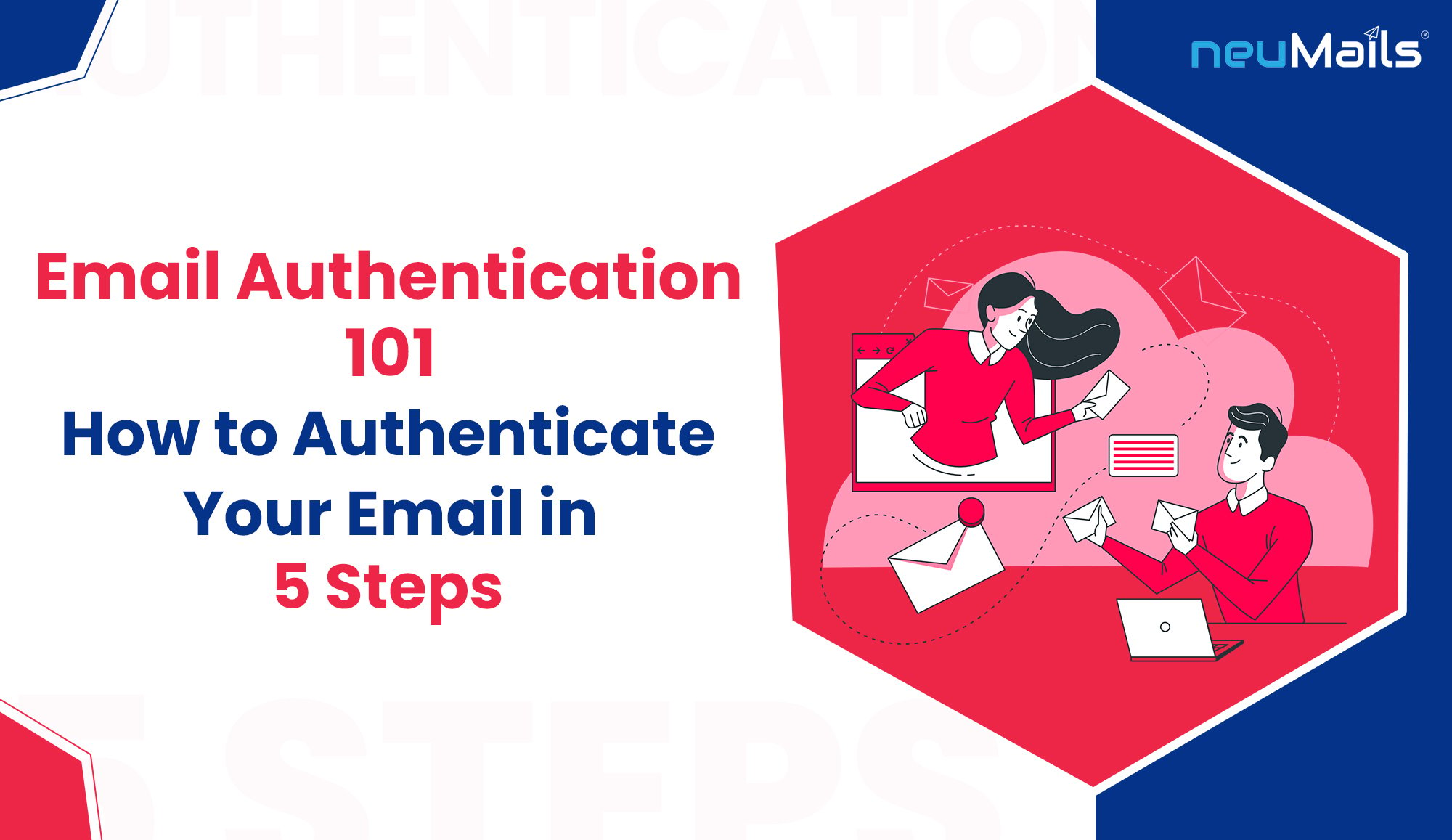Cyber threats and phishing attacks are on a significant rise, due to which the authenticity of emails has become a critical concern. Email authentication is a crucial process that validates the source of an email, helping recipients determine whether an email is genuinely from the claimed sender.
In this guide, we’ll walk you through the essential steps of email authentication, shedding light on various methods to safeguard your communication from unauthorised access.
TABLE OF CONTENTS
Step 1: The Importance of Email Authentication
Email authentication is a security protocol that verifies the legitimacy of the sender’s domain. It prevents email spoofing, phishing attacks, and other fraudulent activities that can compromise sensitive information or damage a brand’s reputation.
Step 2: Implement Email Authentication Methods
- SPF (Sender Policy Framework): SPF is a method that specifies which IP addresses or servers are authorized to send emails on behalf of your domain. By publishing SPF records in your DNS, you instruct email servers to verify the sender’s identity against the authorized servers.
- DKIM (DomainKeys Identified Mail): DKIM adds a digital signature to your outgoing emails. This signature is verified by the recipient’s server against the public key in your DNS records, confirming the email’s authenticity and integrity.
- DMARC (Domain-based Message Authentication, Reporting, and Conformance): DMARC combines SPF and DKIM, allowing you to specify policies on how failing authentication should be handled. It also provides reports on the email sources attempting to use your domain, offering insights into potential threats.
Step 3: Check Email Authenticity
- SPF Check: To verify SPF, check the sender’s domain against the authorized servers listed in their DNS records. The email might be fraudulent if the sender’s IP doesn’t match the authorised list.
- DKIM Verification: The recipient’s server uses the public key to decrypt the DKIM signature. If the decryption is successful and the email content remains unchanged, the email is considered authentic.
Step 4: Leverage Email-Based Authentication Services
- Authentication Services: Various email platforms offer authentication services that can help you streamline the process. These services automatically generate and manage DKIM signatures, simplifying the implementation process.
Step 5: Stay Informed and Regularly Review Authentication Settings
- Regular Review: Email authentication isn’t a one-time setup. Regularly review your SPF, DKIM, and DMARC records to ensure they’re up-to-date and aligned with your email practices.
- Monitor Reports: DMARC provides valuable reports on email authentication failures and sources attempting to send emails using your domain. Use these reports to fine-tune your authentication settings and identify potential threats.
Conclusion: Safeguarding Email Integrity with Authentication
Email authentication is a fundamental aspect of modern cybersecurity practices. By implementing SPF, DKIM, and DMARC, you can establish a robust defence against email spoofing, phishing attacks, and unauthorized access. Regularly reviewing your authentication settings and staying informed about emerging threats will help you maintain the integrity of your email communication. NeuMails can help you secure domain by implementing latest security measures.
FAQs
Q1. Can I use multiple email authentication methods simultaneously?
A) Yes, using multiple methods is recommended for comprehensive email authentication. SPF, DKIM, and DMARC can work together to provide layered protection against different types of attacks.
Q2. Are there tools or services to help with email authentication?
A) Yes, there are tools and services that can help streamline the process of implementing and managing email authentication. Some email platforms offer built-in authentication services, and third-party tools can assist in generating and monitoring authentication records.

